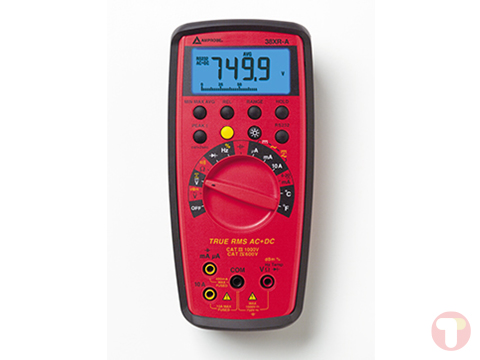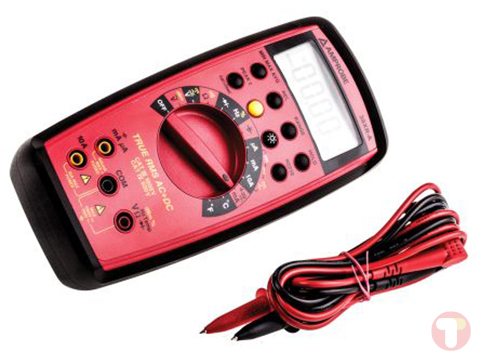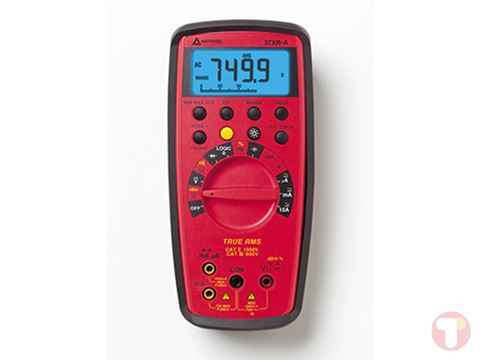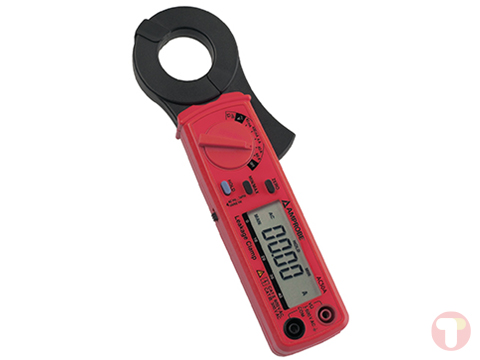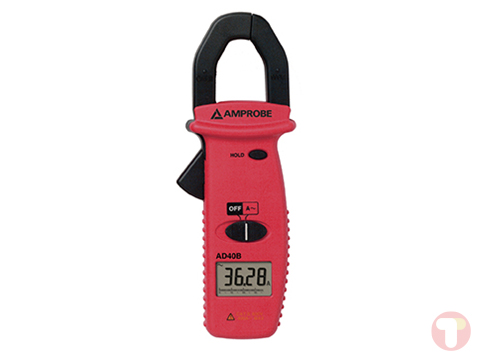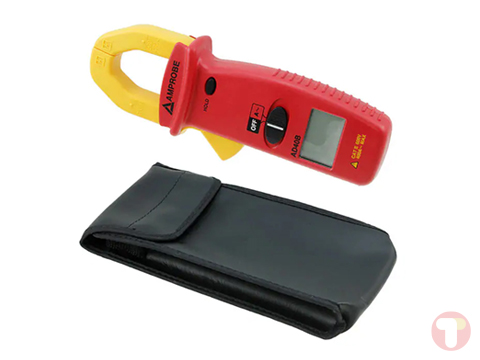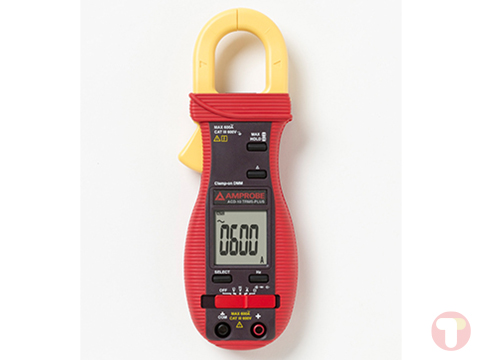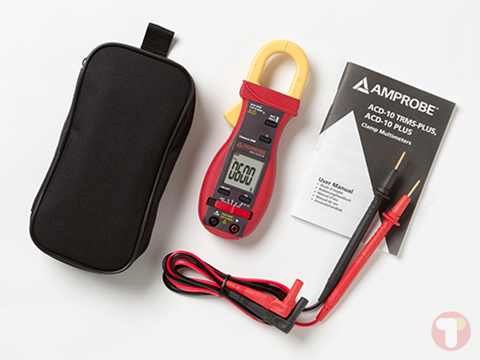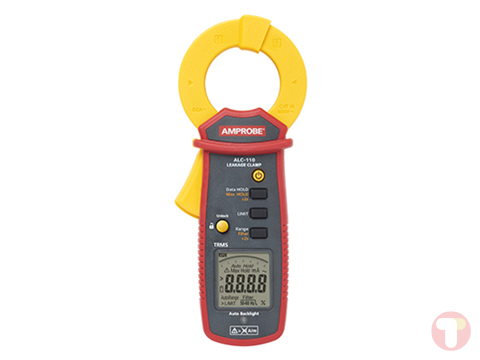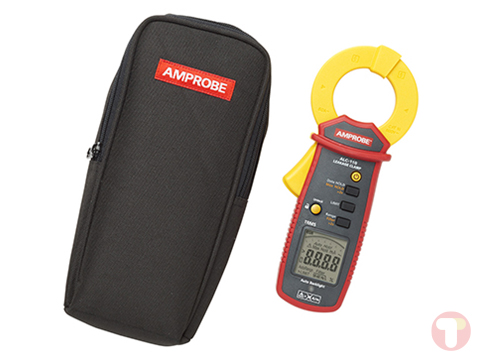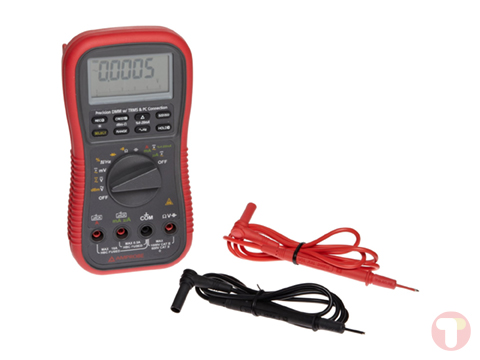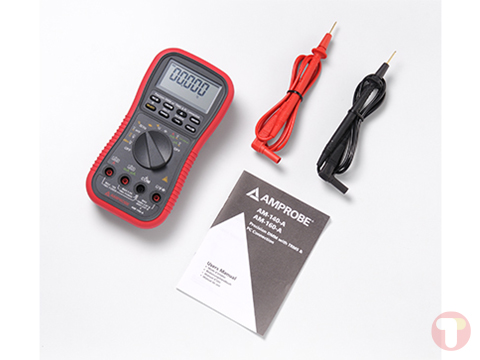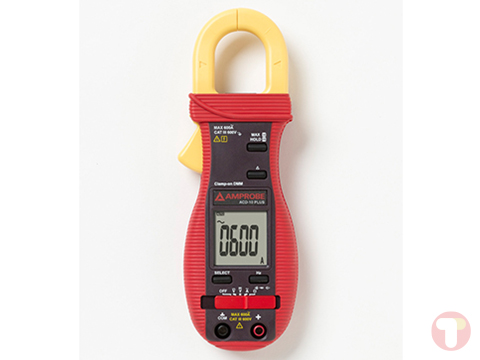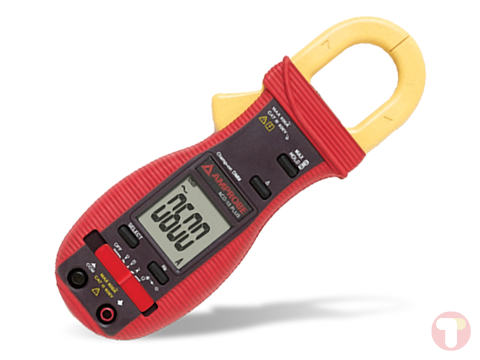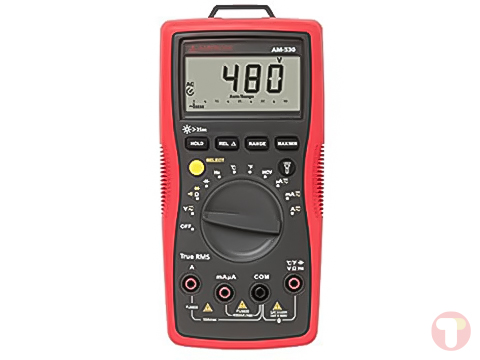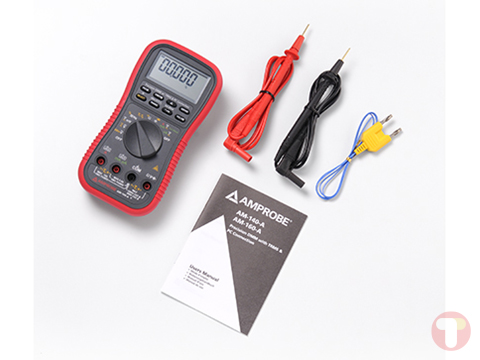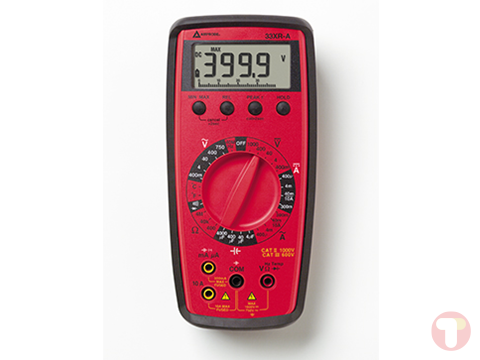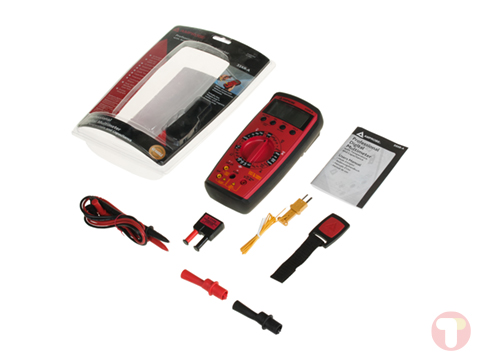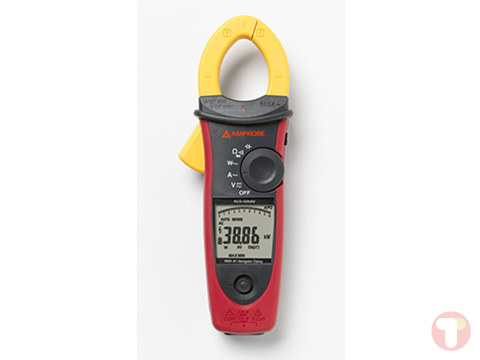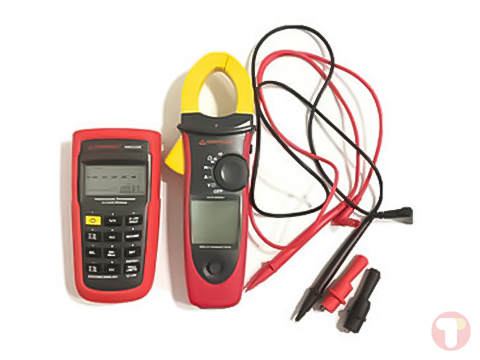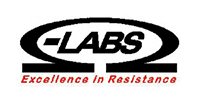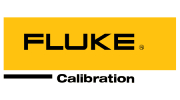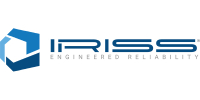The Amprobe 38XR-A is a true RMS auto ranging digital multimeter with optical PC interface for engineers designing and troubleshooting industrial automation and control systems. The 38XR-A is a versatile instrument with the features and functions needed for a wide range of applications.
The Amprobe 38XR-A measures AC voltage to 750 V, DC voltage to 1000 V, AC/DC current to 10 A, resistance to 40 MO, temperature to 2372 °F, capacitance to 400 &sdeg;F, and frequency to 10 MHz. The 38XR-A also features a duty cycle, dBm, and has a 4 to 20mA loop current test and continuity beeper.
The 38XR-A includes Min/Max, Average, Relative, Peak and Data Hold functions; input lead warning; and auto power off to save battery life. Test results are displayed on the 4-3/4 digit LCD with 41-segment analog bar graph. The multimeter has a separate door for easy battery and fuse access and is CAT IV 600 V safety rated.
Why you need a True-RMS Reading Multimeter
True-RMS instruments are accurate on any AC waveform. There are two basic AC measuring systems. One is “average sensing, RMS indicating.” This is the most common system because it is affordable and easy to manufacture. An instrument with this type of measuring system measures the average of a sine wave, and then multiplies it by 1.112, allowing the instrument to indicate RMS. This measuring system is only accurate on sine waves.
The second measuring method is called “RMS Sensing, RMS Indicating.” An instrument with this type of measuring system computes the RMS value of the measured waveform (sine or otherwise). This is referred to as “True-RMS” reading. This measuring system is accurate for any waveform. When an average sensing instrument is used on a non-sinusoidal waveform, measurement accuracy could be off as much as 50%. Since you may not know what type of AC waveform you are measuring, a True-RMS instrument should be used whenever possible.

